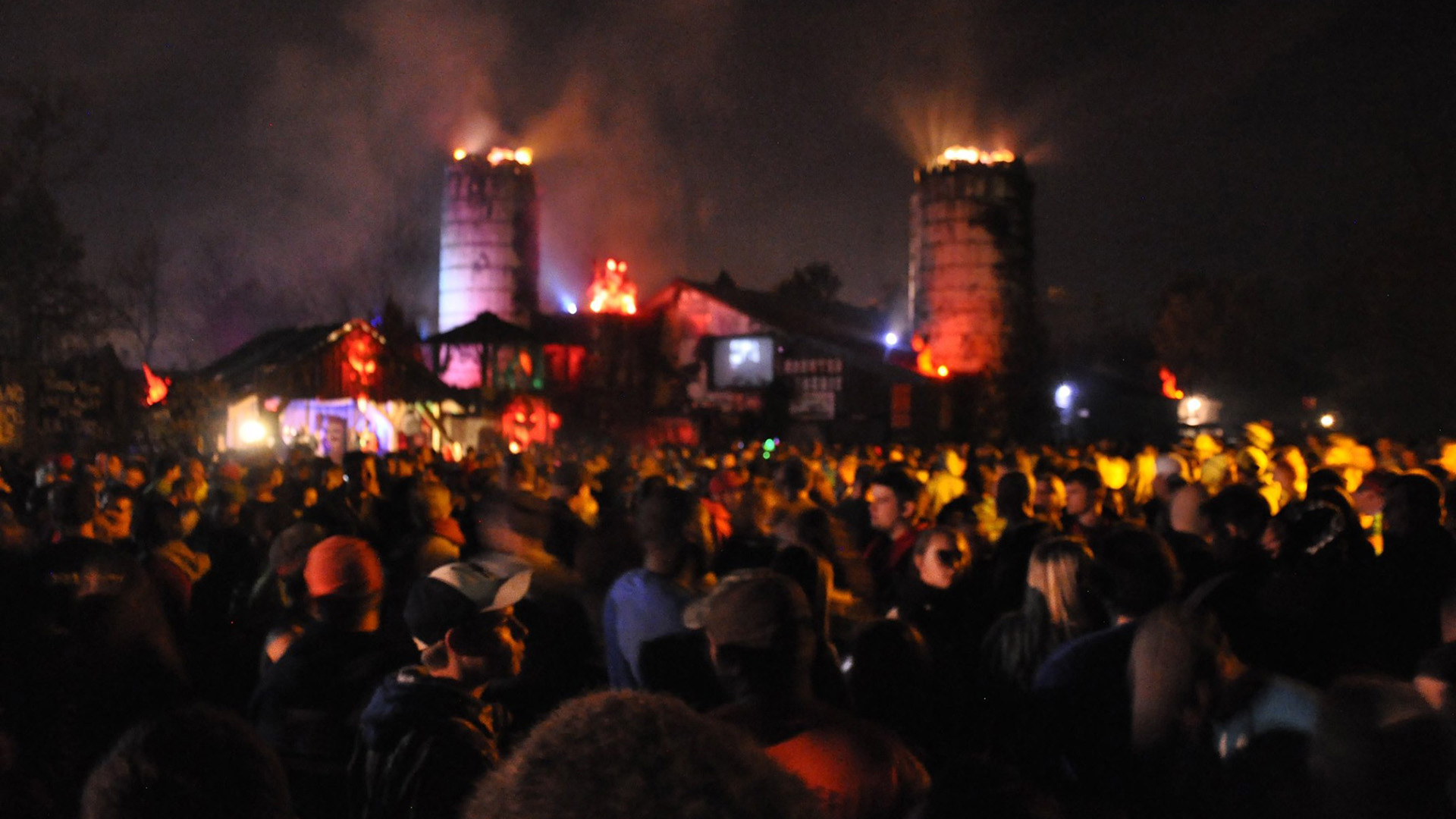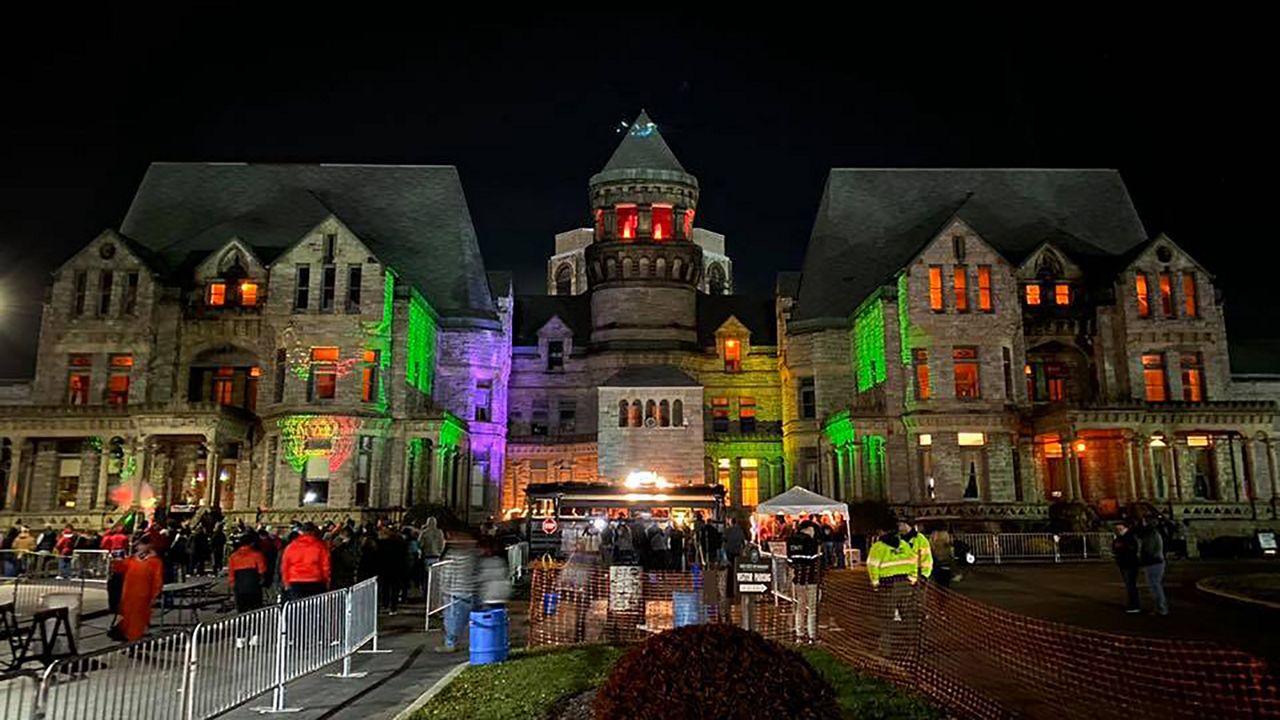COLUMBUS, Ohio — Vic Amesquita, manager of the Blood Prison, an apocalyptic experience at the historic Ohio State Reformatory building, said actors at haunted attractions like his can pull off scares from a safe six-foot distance, but he fears his chances of having a season this year may be less than 50/50 due to the pandemic.
Operators of haunted houses and attractions are hoping to get confirmation from Gov. Mike DeWine’s office and the Ohio Department of Health in the coming weeks that they can open for the season.
They hope a decision comes sooner rather than later. Gearing up to operate in the fall means sunk costs for promotion and advertising, replacing or updating props, and man hours.
“They didn't give us a timetable. They said ‘soon,’ but I have a timetable,” he said. “If we get strung along till the end of September, and then they say, ‘Oh, by the way, we're not going to let you guys open,’ we would take a tremendous hit.”
A handful of haunted attractions determined it was not worth the overheard to prepare for a season that could just as well get canceled or could end up being so regulated that operating would not be profitable.
The list of cancellations includes Doctor Dekay's House of Screams in Ironton, Jail of Terror in Newark, Twisted Trails in Wilmington, and Highway 50 Fright Field in Hamilton County. Haunted attractions at the Kings Island and Cedar Point amusement parks have been canceled.
Shannon Vinson, owner of Highway 50 Fright Field, said her biggest fear was the state cancelling haunted houses last minute. She postponed planning and spending to prepare for the fall season as much as she could, but on Aug. 5, with the uncertainty still present, she called it off.
Even if haunted houses get the green light, it could come with so many stipulations that opening would not make sense, she said. For example, if there is a requirement to sanitize costumes between uses, she said she would be at the laundromat for four hours every night.
“You have drunks that come, you have people that are not going to adhere to the rules, and you might have somebody there with a camera wanting to snap a picture and try to put something dim on you because of that,” she said. “We felt we should cut our losses at this point.”
The Blood Prison is hiring as if the season is on. No one gets rich as a scare actor, but the attraction’s 100 to 150 staff members make solid Christmas money, Amesquita said. The clowns, demons, inmates, and chainsaw-wielding maniacs who bring the state’s haunted attractions to life are mostly Ohioans who do it a side gig because they love Halloween or horror movie fanatics, he said. Once you get your first good scare it becomes addicting.
Sociologist and fear expert Margee Kerr, a faculty member at University of Pittsburg, said the decision is not just a matter of balancing the potential risks of people running around screaming in the dark with the economic consequences for operators and scare actors of a canceled season. Haunted houses offer more than entertainment, she said. Her research shows these types of experiences can decrease stress and anxiety and help patrons take control of their fears.
“Right now in a time of great uncertainty when everybody is feeling a little out of control and a little kind of just, well, scared, it can actually be a rewarding experience to reclaim fear in your own terms,” she said. “The big question is weighing all of the potential gains with the risk.”
Amesquita voluntarily submitted the Blood Prison’s reopening plans to the state health department for review. Now he is waiting to hear back.
The Blood Prison has eliminated its “touch pass,” a $5 add-on option for a more immersive experience that gets visitors a wristband indicating to actors they want to be touched. Guests and scare actors will wear masks, which is not a change for some costumes, but a big change for others that are makeup-forward. Instead of running groups of 15 to 20 people at a time, Amesquita’s plan has the max size at 10.
In a normal season, the prison haunt has 25,000 to 35,000 visitors. If Amesquita is required to further reduce group size or increase the time increments between entries, wait times will get longer and everyone will have to stay later in the evening, he said. With hours of operation restrictions for other sectors in the state, like the 10 p.m. alcohol sales cutoff, owners are unsure if they will even be allowed to run their haunts late into the night.
Because the haunted experience is mostly inside the prison, Amesquita faces even more challenges opening. Outdoor haunts may be more likely to get the green light.
“The haunt is 95 or 90 percent indoors. So yeah, that is a concern,” he said. “If you know anything about haunts, a lot of the time you've got one group that'll fly through your haunt, that won't stop for anything because they're scared s***less and then there's other groups that are amazed by the setwork you've done, and they're looking at all the artwork. So sometimes groups run into each other. We really got to avoid that this year, especially as an indoor haunt.”
Haunted attractions often open in September or early October, meaning July and August can be the busiest – and most expensive – planning months.
The Ohio Department of Health did not respond to an inquiry about whether there are any forthcoming protocols or announcements for haunted attractions.
At least one year-round haunted house is currently operating. The haunt at the Ghostly Manor Thrill Center in Sandusky reopened in early June when indoor family entertainment centers were authorized to resume business. To reduce the amount of constant sanitization, the haunted house took down most of its hanging features and props: curtains, body bags, heads, and slabs of beef – anything patrons touch.
But that haunt is modest in size compared to the state’s huge haunted houses like Haunted Hoochie in Pataskala, which draws massive crowds. The Haunted Hoochie intends to open and said it has worked out an “intensive plan” with state and local officials.

In a message, the Haunted Hoochie shared the last update they got from their contact: “We are all actively working together and have created together a safe reopening plan and at this time we all await the governor’s final decision.”
A Japanese company has opened the first drive-thru haunt in Tokyo out of a parking garage. Visitors are given a Bluetooth speaker and actors shake cars and press on the car windows with fake blood. A company in Southern California is preparing a drive-thru in Costa Mesa at a fairgrounds.
No Ohio haunted houses have announced drive-thru plans yet. Brimstone Haunt in Wilmington asked its Facebook followers if they would try a drive-thru haunt, but for now, they plan to open for a normal season with COVID-19 safety precautions.
Haunt operators understand this year will be different, but they hope the restrictions will still allow for a profitable operation and an enjoyable experience.
Ever since Amesquita went to his first haunted attraction as a kid – a terrifying maze that had guys jumping out of trees with chainsaws – he has been hooked.
“I do this because I love it. I have a passion for it. My team has passion for it,” he said. “But at the same time, we've got to be able to make money so we can keep going. I can't run it if it's not going to make sense financially. And if the guidelines are too strict, then we'll probably have to close.”



